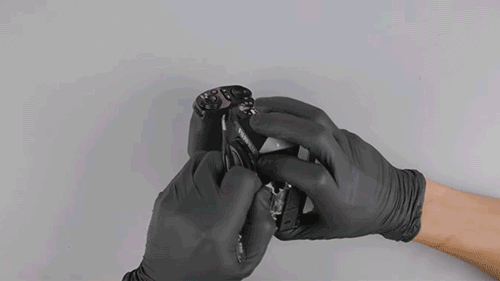Don't try this at home! Watch this camera get taken to pieces
Trigger Warning: This brand new Fujifilm X-S20 gets taken apart piece by piece!

Have you ever seen a camera being disassembled? Here's your chance to watch one being taken to pieces without ruining your own camera, as the folks at Kolari Vision have shared a video of a technician stripping a brand-new body down to its core.
Kolari Vision specializes in modifying cameras, specifically image sensors. The video (embedded below) shows a steady-fingered engineer delicately opening one of Fujifilm's latest cameras, the Fujifilm X-S20, and removing components piece by piece. In this somewhat agonizing watch, we get a unique opportunity to look at the inner workings of one of the best Fujifilm cameras of the year.
In this case, the engineer is about to perform an infrared modification on the sensor allowing the sensor to capture light on the infrared spectrum, enabling us to see what is not visible with the naked eye.
The engineer takes you step by step through the process of dissembling the Fujifilm camera. Removing many screws and ribbons from the circuit board provides access for the removal of the camera sensor, ready for the conversion procedure. In the case of an IR conversion, the camera’s internal hot mirror is removed and replaced with a filter that only lets infrared light through.
An IR conversion is the most effective and efficient way of shooting infrared photography, enabling the capture of infrared light at usual shutter speeds and low ISO. A conversion to the sensor also allows for easy switching between lenses, without the need to swap filters.
If you don't like the idea of sacrificing a camera body for an IR conversion, many great infrared lens filters will enable you to get similar results. Some camera manufacturers also create official IR versions of some of their models.
An example of this is the Fujifilm GFX 100 IR, an infrared version of the medium format camera, and Japan-only IR versions of the Olympus OM-D E-M1 X and E-M1 Mark III specifically designed for investigation and research purposes.
Get the Digital Camera World Newsletter
The best camera deals, reviews, product advice, and unmissable photography news, direct to your inbox!
If you do, however, wish to convert your camera for infrared modification, make sure to seek reputable professional modifiers such as Kolari Vision.
You might also be interested in the best infrared thermometers, the best thermal imaging cameras, the best thermal imaging binoculars or the best thermal drones.

Kalum is a professional photographer with over a decade of experience, also working as a photo editor and photography writer. Specializing in photography and art books, Kalum has a keen interest in the stories behind the images and often interviews contemporary photographers to gain insights into their practices. With a deep passion for both contemporary and classic photography, Kalum brings this love of the medium to all aspects of his work.

